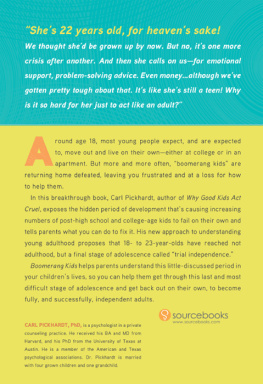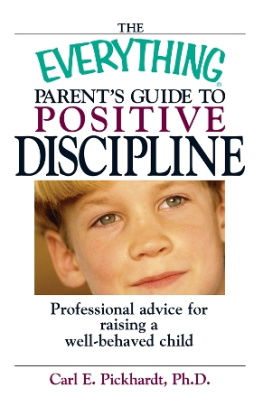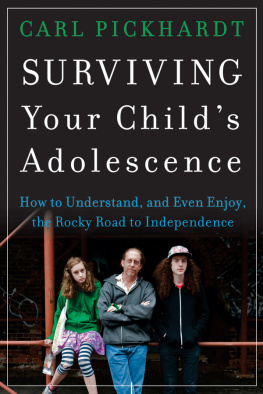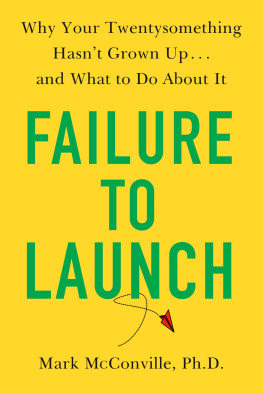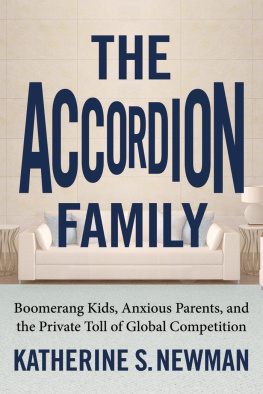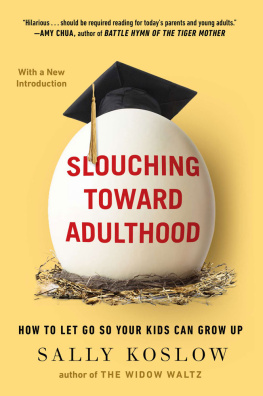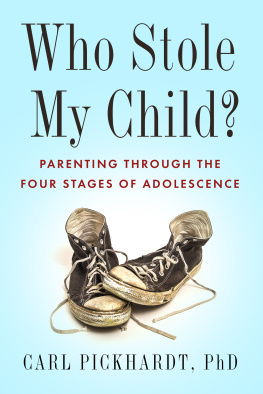
Copyright 2011 by Carl Pickhardt
Cover and internal design 2011 by Sourcebooks, Inc.
Cover design by Jane Archer
Cover image Image Source
Sourcebooks and the colophon are registered trademarks of Sourcebooks, Inc.
All rights reserved. No part of this book may be reproduced in any form or by any electronic or mechanical means including information storage and retrieval systemsexcept in the case of brief quotations embodied in critical articles or reviewswithout permission in writing from its publisher, Sourcebooks, Inc.
This publication is designed to provide accurate and authoritative information in regard to the subject matter covered. It is sold with the understanding that the publisher is not engaged in rendering legal, accounting, or other professional service. If legal advice or other expert assistance is required, the services of a competent professional person should be sought.From a Declaration of Principles Jointly Adopted by a Committee of the American Bar Association and a Committee of Publishers and Associations
All brand names and product names used in this book are trademarks, registered trademarks, or trade names of their respective holders. Sourcebooks, Inc., is not associated with any product or vendor in this book.
Published by Sourcebooks, Inc.
P.O. Box 4410, Naperville, Illinois 60567-4410
(630) 961-3900
Fax: (630) 961-2168
www.sourcebooks.com
Library of Congress Cataloging-in-Publication Data
Pickhardt, Carl E.
Boomerang kids : a revealing look at why so many of our children are failing on their own, and how parents can help / Carl Pickhardt.
p. cm.
Includes bibliographical references and index.
1. Parent and adult child. 2. Young adultsPsychology. 3. AdulthoodPsychological aspects. 4. Parenting. I. Title.
HQ755.86.P53 2011
155.65dc22
2011010334
Printed and bound in the United States of America.
VP 10 9 8 7 6 5 4 3 2 1
To all those parents whose son or daughter comes
home after foundering for independence and needs
help to recover and get ready to try again.
It aint over till its over.
Yogi Berra
DISCLAIMER
Unless otherwise attributed, all quotations and examples in this book are fictional, made up by me to illustrate psychological points similar in kind but not in actuality to cases I have known.
CONTENTS
INTRODUCTION
I figured I was ready to move out and make it on my own. I had a little money saved, a job lined up, a place with a couple of roommates to stay where we could share expenses. But it just got away from me. Maybe it was too much, too fast, I dont know. For a lot of reasons I just couldnt catch hold. I crashed. And when you crash in life, where else are you supposed to go except back home? Disappointed? Sure, Im disappointed. And so are my parents, though they dont come out and say so. I just need a safe place and some time to get my feet back under me so I can try moving out on my own again.
F or many parents, hearing from their child how hard it is striking out alone in the world is difficult, even heartbreaking. But the reality is that such stories are becoming more and more common.
Today, the adolescent journey from childhood to adult independence is a long one, and the hardest part is usually saved for last. This final stage of adolescence, what I call trial independence, typically unfolds between the ages of eighteen and twenty-three and ends a little after the college-age years, when a young person finally establishes social, psychological, and economic independence.
The problem, though, is that most parents and adolescents have been led to believe that graduation from high school signifies that one is ready to act self-sufficiently and responsibly grown-up. This assumption is reinforced by many of our books, television shows, movieseven our laws. For most older adolescents today, it normally takes at least three to five years after high school, when they are living away from home and struggling to operate more on their own, to actually master the skills needed for independent living. And most adults (and most young people themselves) vastly underestimate the complexity of this final struggle for independence. This miscalculation becomes most apparent when it results in boomerang kidslast-stage adolescents who lose their footing and come back home to rely on their parents support for a while longer.
I have written this book to help parents understand this last and most challenging stage of adolescence, the one in which most boomerang kids tend to return to reside at home. By understanding the nature of this challenging time and identifying the multiple causes for returning home, parents can move past frustration and instead focus on helping their child move on to adulthood.
Hopefully, this book will help you understand why your son or daughter has returned, what you can do to support your childs recovery, and how to strengthen your childs readiness and resolve to try for independence again. So what I have written is primarily a manual for intervention when your last-stage adolescent returns home; but it is also a guide for prevention, since it discusses how you can prepare children before they depart from the home, making a boomerang return less likely.
Chapter 1 describes the last stage of adolescencetrial independencesetting it within the context of four stages of normal adolescent development. Chapter 2 examines how immaturity or delayed development from earlier adolescent stages can put off readiness for independence, and how adequate preparation before the childs departure from home can increase the chances of a successful launch.
Chapters 313 walk you step by step through the main life challenges encountered during trial independence. When one or more of the following challenges comes to the point of crisis, it can cause a young person to boomerang home to recover:
- Missing home and familycoping with loneliness after moving out on ones own
- Managing increased freedomhandling a greater range of choice
- Flunking out of collegefailing to complete further education
- Unemploymentseeking or losing a job
- Roommate problemssharing a domestic living arrangement
- Broken love relationshipsfinding and losing love
- Substance useliving in a drug-filled world
- Indebtednessoverspending and credit card living
- Stresscoping with excessive demand
- Emotional crisisfeeling overwhelmed by unhappy feelings
- Fear of the futurefacing what to do with ones life
By understanding these challenges and how to help children navigate through them, parents can learn how best to ready children before they leave or support them after they return home.
Chapter 14 makes recommendations for how parents and boomerang kids can structure this period of residence so that it works as well as possible for all concerned. Chapter 15 describes the gifts available to young people in each type of crisis, and how these gifts can help them grow. Finally, Chapter 16 describes how to recognize the end of adolescence, identifies some developmental tasks of young adulthood that follow, and recommends how parents can adjust their parenting to stay well connected to their grown son or daughter during the independent years ahead.
At the end of each chapter, I give a Parenting Prescription, which summarizes several actions that parents can take and topics for them to discuss that can be helpful to their son or daughter at this trying time of life.
Next page
